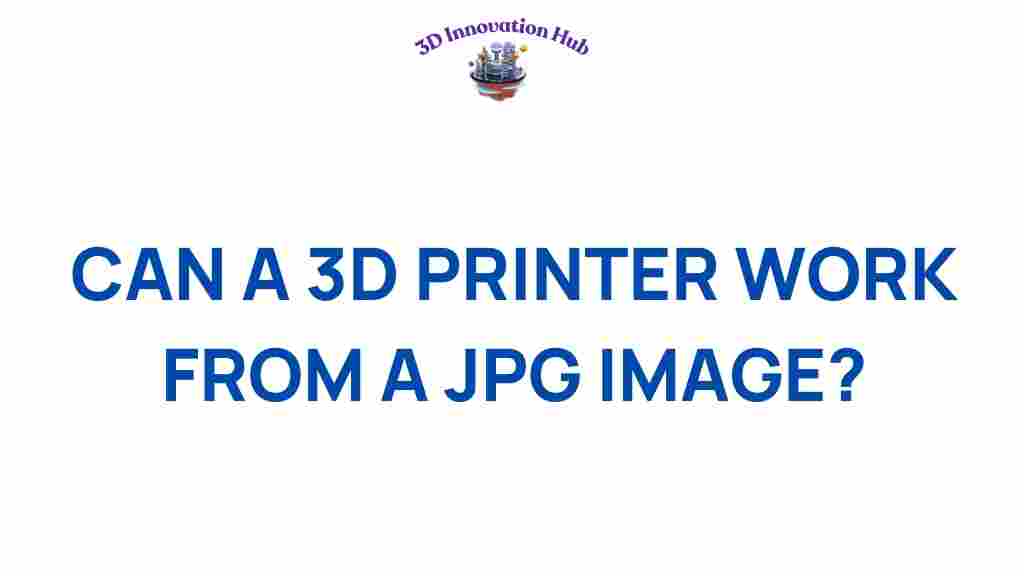Can a 3D Printer Transform Your JPG Images into Reality? Exploring 3D Printing in the Digital Age
3D printing technology has revolutionized the way we think about manufacturing, design, and creativity. But can a 3D printer actually transform your JPG images into physical objects? This article will delve into the innovative process of 3D printing, the significance of digital design, and how you can leverage technology to bring your JPG images to life.
Understanding 3D Printing and Its Potential
3D printing, also known as additive manufacturing, is a process that creates three-dimensional objects layer by layer from a digital file. This remarkable technology has opened up new realms of creativity and innovation, allowing artists, designers, and manufacturers to prototype and produce complex shapes and structures that were once impossible to achieve.
Incorporating 3D printing into your workflow can enhance your creativity and streamline the prototyping process. But what about converting your JPG images into tangible items? Let’s explore how this transformation occurs.
Transforming JPG Images into 3D Models
To turn a JPG image into a 3D printed object, you need to follow a systematic process that involves several steps:
- Step 1: Choose Your JPG Image
- Step 2: Convert JPG to 3D Model
- Blender
- SketchUp
- Tinkercad
- Adobe Illustrator (for vector graphics)
- Step 3: Edit and Refine the Model
- Step 4: Prepare the Model for Printing
- Step 5: 3D Printing the Model
- Step 6: Post-Processing
Select a high-resolution JPG image that you wish to transform. The clearer the image, the better the final 3D print will be.
You will need to convert your JPG image into a 3D model. This is typically done using specialized software that can interpret the image data and translate it into a three-dimensional format. Popular software options include:
Once you have created a basic 3D model, you may need to edit and refine it. This can involve adjusting dimensions, adding or removing details, and ensuring that the model is suitable for printing.
After refining your design, export it in a format compatible with your 3D printer, such as STL or OBJ. This step is crucial, as different printers may require specific file formats.
With your model ready, you can proceed to 3D print it. Load the file into your printer’s software, choose your settings (like material and print quality), and start the printing process.
Once the print is complete, you may need to sand, paint, or assemble parts of your model. Post-processing enhances the final appearance and durability of your 3D print.
Benefits of Using 3D Printing for JPG Images
The ability to convert JPG images into physical objects using 3D printing comes with a multitude of advantages:
- Creativity and Innovation: This technology allows individuals to push the boundaries of traditional design, turning digital art into real-world products.
- Rapid Prototyping: Designers can quickly create prototypes of their ideas, facilitating faster feedback and iteration cycles.
- Customization: You can personalize items based on your JPG designs, offering unique products to customers.
- Cost-Effectiveness: 3D printing reduces waste and minimizes the cost of producing custom designs.
Troubleshooting Common Issues
While the process of turning JPG images into 3D prints is exciting, it can also present challenges. Here are some common issues and their solutions:
- Problem: Poor Print Quality
- Problem: Model Not Printing Properly
- Problem: Material Issues
- Problem: Long Print Times
Solution: Ensure that your 3D model is properly scaled and that the printer settings are optimized for the material you are using.
Solution: Check for any errors in the 3D model, such as non-manifold edges or intersecting geometries. Use repair tools available in most 3D modeling software.
Solution: Make sure you are using the right type of filament for your design and that it is stored properly to avoid moisture absorption.
Solution: Adjust the print settings, such as layer height and speed, to balance quality and time.
Additional Tips for Successful 3D Printing
To maximize your success with 3D printing, consider these best practices:
- Start with simple designs before moving to complex ones.
- Utilize online communities and resources for support and inspiration. You can find helpful tutorials and forums to enhance your skills.
- Experiment with different materials to discover the best fit for your projects.
- Consider using a 3D printing service if you don’t own a printer, as they can often provide professional-quality prints.
Conclusion
In conclusion, the advent of 3D printing technology has made it possible to transform JPG images into tangible objects, opening up new avenues for creativity and innovation. Whether you are an artist, designer, or hobbyist, the ability to prototype and manufacture using digital design is a game changer. By understanding the steps involved and being prepared for common challenges, you can successfully navigate the exciting world of 3D printing.
If you want to learn more about the capabilities of 3D printing and how to get started, be sure to check out this comprehensive guide on 3D modeling techniques. For additional resources and community support, visit 3D printing forums where you can connect with fellow enthusiasts.
This article is in the category and created by 3D Innovation Hub Team
